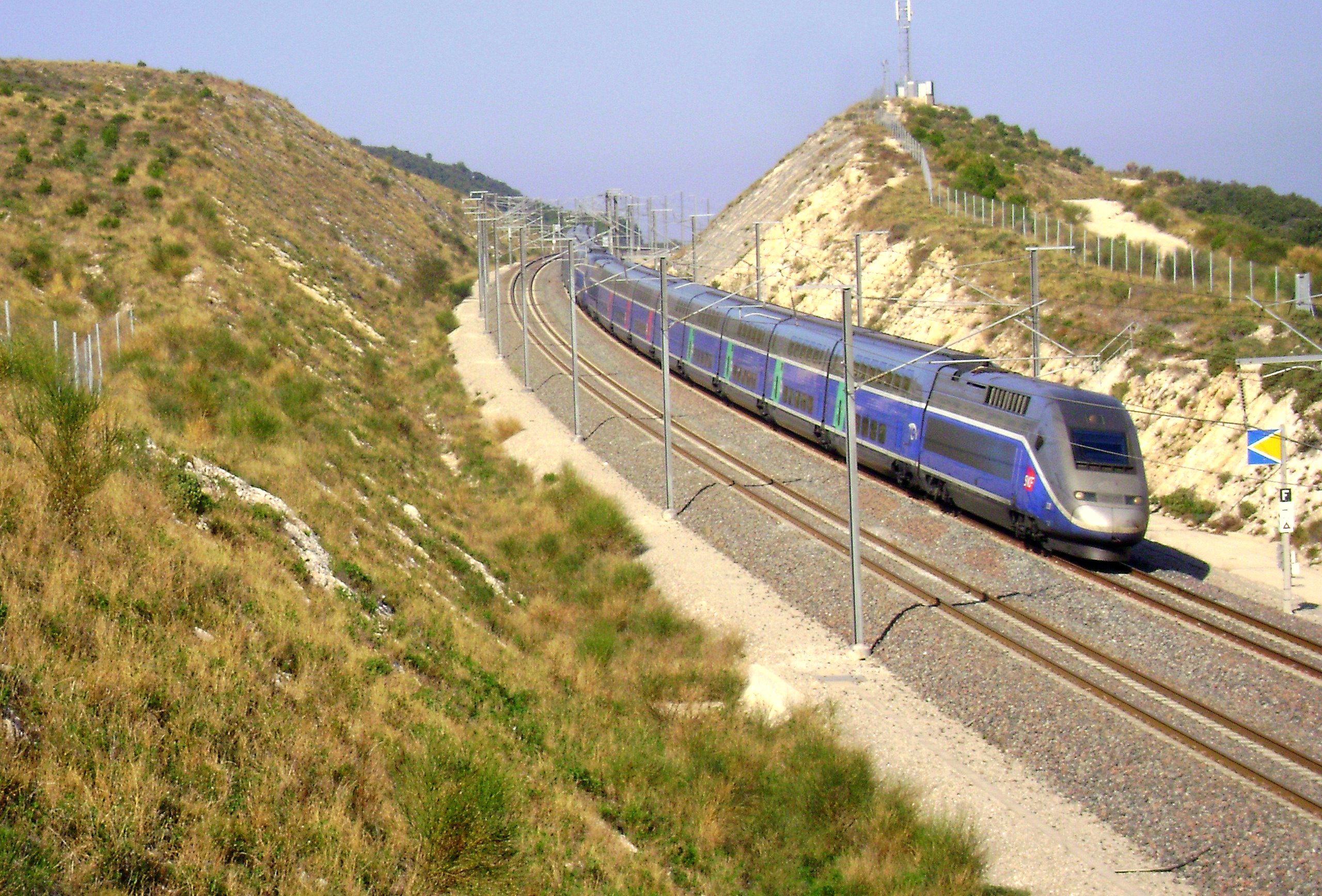|
SMT-Goupil
SMT Goupil (SMT - "Society of Microcomputing and Telecommunications") was a French IT company created in 1979 by Claude Perdrillat, previously a senior executive in the General Directorate of Telecommunications. The company produced many microcomputers during the 1980s, mainly for French government agencies. This market collapsed at the end of the 1980s with the appearance of drastic budgetary restrictions in the French public sector and competition from more aggressive technological rivals like IBM, Apple Inc., Apple and Olivetti. Despite a significant debt of 40 million francs, the company went public in 1985, claiming to hold 15% of the French microcomputer market. In January 1990, Goupil claimed to hold 18% of the market for professional microcomputers in France. The company filed for bankruptcy in June 1991 with the accounting books revealing a debt of 700 million francs and a real turnover of 830 million francs in 1990. Models The first Goupil G1 and G2 computers of ... [...More Info...] [...Related Items...] OR: [Wikipedia] [Google] [Baidu] |
Public Company
A public company is a company whose ownership is organized via shares of share capital, stock which are intended to be freely traded on a stock exchange or in over-the-counter (finance), over-the-counter markets. A public (publicly traded) company can be listed on a stock exchange (listing (finance), listed company), which facilitates the trade of shares, or not (unlisted public company). In some jurisdictions, public companies over a certain size must be listed on an exchange. In most cases, public companies are ''private'' enterprises in the ''private'' sector, and "public" emphasizes their reporting and trading on the public markets. Public companies are formed within the legal systems of particular states and so have associations and formal designations, which are distinct and separate in the polity in which they reside. In the United States, for example, a public company is usually a type of corporation, though a corporation need not be a public company. In the United Kin ... [...More Info...] [...Related Items...] OR: [Wikipedia] [Google] [Baidu] |
Roger Tallon
Roger Tallon (6 March 1929 – 20 October 2011) was a French industrial designer. Biography After studying as an engineer (1944–1950), Tallon was employed by Caterpillar France and DuPont. In 1953, he joined Technès, the technical and aesthetic studies office founded in 1949 by the father of industrial aesthetics, Jacques Viénot and Jean Parthenay. Being rapidly promoted to technical and artistic director at the agency, he became the sole director after Viénot's death in 1959. In 1957 he enrolled at the ("School of Applied Arts") in Paris Paris () is the Capital city, capital and List of communes in France with over 20,000 inhabitants, largest city of France. With an estimated population of 2,048,472 residents in January 2025 in an area of more than , Paris is the List of ci ..., and put in place the first design course in the country. In 1963, he set up the Design Department of the École nationale supérieure des arts décoratifs in Paris. As a con ... [...More Info...] [...Related Items...] OR: [Wikipedia] [Google] [Baidu] |
80386
The Intel 386, originally released as the 80386 and later renamed i386, is the third-generation x86 architecture microprocessor from Intel. It was the first 32-bit processor in the line, making it a significant evolution in the x86 architecture. Pre-production samples of the 386 were released to select developers in 1985, while mass production commenced in 1986. The 386 was the central processing unit (CPU) of many workstations and high-end personal computers of the time. The 386 began to fall out of public use starting with the release of the i486 processor in 1989, while in embedded systems the 386 remained in widespread use until Intel finally discontinued it in 2007. Compared to its predecessor the Intel 80286 ("286"), the 80386 added a three-stage instruction pipeline which it brings up to total of 6-stage instruction pipeline, extended the architecture from 16-bits to 32-bits, and added an on-chip memory management unit. This paging translation unit made it much easier ... [...More Info...] [...Related Items...] OR: [Wikipedia] [Google] [Baidu] |
80286
The Intel 80286 (also marketed as the iAPX 286 and often called Intel 286) is a 16-bit microprocessor that was introduced on February 1, 1982. It was the first 8086-based CPU with separate, non-multiplexed address and data buses and also the first with memory management and wide protection abilities. It had a data size of 16 bits, and had an address width of 24 bits, which could address up to 16M of memory with a suitable operating system such as Windows compared to 1M for the 8086. The 80286 used approximately 134,000 transistors in its original nMOS (HMOS) incarnation and, just like the contemporary 80186, it can correctly execute most software written for the earlier Intel 8086 and 8088 processors. The 80286 was employed for the IBM PC/AT, introduced in 1984, and then widely used in most PC/AT compatible computers until the early 1990s. In 1987, Intel shipped its five-millionth 80286 microprocessor. History and performance Intel's first 80286 chips were specified for a ... [...More Info...] [...Related Items...] OR: [Wikipedia] [Google] [Baidu] |
MS-DOS 5
MS-DOS ( ; acronym for Microsoft Disk Operating System, also known as Microsoft DOS) is an operating system for x86-based personal computers mostly developed by Microsoft. Collectively, MS-DOS, its rebranding as IBM PC DOS, and a few operating systems attempting to be compatible with MS-DOS, are sometimes referred to as "DOS" (which is also the generic acronym for disk operating system). MS-DOS was the main operating system for IBM PC compatibles during the 1980s, from which point it was gradually superseded by operating systems offering a graphical user interface (GUI), in various generations of the graphical Microsoft Windows operating system. IBM licensed and re-released it in 1981 as PC DOS 1.0 for use in its PCs. Although MS-DOS and PC DOS were initially developed in parallel by Microsoft and IBM, the two products diverged after twelve years, in 1993, with recognizable differences in compatibility, syntax and capabilities. Beginning in 1988 with DR-DOS, se ... [...More Info...] [...Related Items...] OR: [Wikipedia] [Google] [Baidu] |
LCD Screen
A liquid-crystal display (LCD) is a flat-panel display or other electronically modulated optical device that uses the light-modulating properties of liquid crystals combined with polarizers to display information. Liquid crystals do not emit light directly but instead use a backlight or reflector to produce images in color or monochrome. LCDs are available to display arbitrary images (as in a general-purpose computer display) or fixed images with low information content, which can be displayed or hidden: preset words, digits, and seven-segment displays (as in a digital clock) are all examples of devices with these displays. They use the same basic technology, except that arbitrary images are made from a matrix of small pixels, while other displays have larger elements. LCDs are used in a wide range of applications, including LCD televisions, computer monitors, instrument panels, aircraft cockpit displays, and indoor and outdoor signage. Small LCD screens are common in LC ... [...More Info...] [...Related Items...] OR: [Wikipedia] [Google] [Baidu] |
SFENA
Société française d'équipements pour la navigation aérienne or SFENA was a former French avionics company. History It was founded in 1947. It was disbanded in 1989. It made the flight control system (AFCS) for Concorde, as well as its artificial horizon and horizontal situation indicator (HSI), and automatic throttle system (ATS). Ownership It was merged with Crouzet in 1981, when Crouzet took its ownership from 35% to 85%. Structure It was headquartered at Neuilly-sur-Seine in Hauts-de-Seine (Île-de-France region) until 1970 when it moved to Vélizy-Villacoublay in a technical research centre near Vélizy – Villacoublay Air Base. Products It made guidance systems for aircraft including: * Artificial horizons (attitude indicators or ADI) * Horizontal situation indicators (HSI) * Autopilots * Flight controls (AFCS) * Sensors See also * Smiths Industries Smiths or Smith's may refer to: Companies *Smith Electric Vehicles, or Smith's, a manufacturer of electric trucks ... [...More Info...] [...Related Items...] OR: [Wikipedia] [Google] [Baidu] |
UNIX
Unix (, ; trademarked as UNIX) is a family of multitasking, multi-user computer operating systems that derive from the original AT&T Unix, whose development started in 1969 at the Bell Labs research center by Ken Thompson, Dennis Ritchie, and others. Initially intended for use inside the Bell System, AT&T licensed Unix to outside parties in the late 1970s, leading to a variety of both academic and commercial Unix variants from vendors including University of California, Berkeley ( BSD), Microsoft (Xenix), Sun Microsystems ( SunOS/ Solaris), HP/ HPE ( HP-UX), and IBM ( AIX). The early versions of Unix—which are retrospectively referred to as " Research Unix"—ran on computers such as the PDP-11 and VAX; Unix was commonly used on minicomputers and mainframes from the 1970s onwards. It distinguished itself from its predecessors as the first portable operating system: almost the entire operating system is written in the C programming language (in 1973), which allows U ... [...More Info...] [...Related Items...] OR: [Wikipedia] [Google] [Baidu] |
Kaypro
Kaypro Corporation was an American home and personal computer manufacturer based in Solana Beach, California, in the 1980s. The company was founded by Non-Linear Systems (NLS) to compete with the popular Osborne 1 portable microcomputer. Kaypro produced a line of rugged, luggable CP/M-based computers sold with an extensive software bundle which supplanted its competitors and quickly became one of the top-selling personal computer lines of the early 1980s. Kaypro was exceptionally loyal to its original customer base but slow to adapt to the changing computer market and the advent of IBM PC compatible technology. It faded from the mainstream before the end of the decade and was eventually forced into bankruptcy in 1992. History Kaypro began as Non-Linear Systems (NLS), a maker of electronic test equipment, founded in 1952 by Andrew Kay, the inventor of the digital voltmeter. In the 1970s, NLS was an early adopter of microprocessor technology, which enhanced the flexibility of pro ... [...More Info...] [...Related Items...] OR: [Wikipedia] [Google] [Baidu] |
Computing For All
The Computing for All plan (''Plan Informatique pour Tous'' – ''IPT'') was a French government plan to introduce computers to the country's 11 million pupils. A second goal was to support national industry. It followed several introductory computer science programs in schools since 1971. The IPT plan was presented to the press on January 25, 1985 by Laurent Fabius, Prime Minister at the time. It aimed to set up, from the start of that school year, more than 120,000 machines in 50,000 schools and to train 110,000 teachers. Its estimated cost was 1.8 billion francs, including 1.5 billion for equipment. The plan was abandoned in 1989. Description The selection of industry partners was entrusted to Gilbert Trigano, co-founder of Club Méditerranée, connected with French companies such as Exelvision, Léanord, SMT Goupil, Thomson, Bull, LogAbax, etc. This choice was political because its initiator, Jean-Jacques Servan-Schreiber, had indicated his preference for Macintosh, which ... [...More Info...] [...Related Items...] OR: [Wikipedia] [Google] [Baidu] |
Micral
Micral is a series of microcomputers produced by the French company Réalisation d'Études Électroniques (:fr:R2E, R2E), beginning with the Micral N in early 1973. The Micral N was one of the first commercially available microprocessor-based computers. In 1986, three judges at The Computer Museum, Boston – Apple II designer and Apple Inc. co-founder Steve Wozniak, early Micro Instrumentation and Telemetry Systems, MITS employee and ''PC World'' publisher David Bunnell, and the museum's associate director and curator Oliver Strimpel – awarded the title of "first personal computer using a microprocessor" to the 1973 Micral. The Micral N was the earliest commercial, non-kit personal computer based on a microprocessor (in this case, the Intel 8008). The Computer History Museum currently says that the Micral is one of the earliest commercial, non-kit personal computers. The 1971 Kenba ... [...More Info...] [...Related Items...] OR: [Wikipedia] [Google] [Baidu] |








